“Come to me, all you who labor and are burdened, and I will give you rest.” – Matthew 11:28
The Sacrament of Reconciliation is one of the Catholic Church’s greatest offerings. To be wiped free of sin and granted absolution is truly a gift. Pope Francis reminds us, “Jesus, who waits for us, listens to us, and forgives us, is the center of confession.” If you teach in the primary grades, you may already be familiar with the great resources available for preparing young children to experience their first Reconciliation, usually in second grade, along with preparation for First Eucharist at RCL Benziger Sacraments.
 As children advance to upper grades, they still benefit from continuing catechesis about the Sacrament of Reconciliation. Little problems may become big issues for young people. It is important to emphasize the healing power of forgiveness, absolution, and the repair of our relationship with God. How important it is that they know that their Loving Father waits for them with open arms!
As children advance to upper grades, they still benefit from continuing catechesis about the Sacrament of Reconciliation. Little problems may become big issues for young people. It is important to emphasize the healing power of forgiveness, absolution, and the repair of our relationship with God. How important it is that they know that their Loving Father waits for them with open arms!
As children grow, they continue to need to turn back to Jesus with their concerns and problems. In every grade of Blest Are We Faith in Action and Be My Disciples, you will find lessons that lend themselves to revisiting the concept of reconciliation and renewal. Take advantage of the opportunity to reinforce the message of God’s loving forgiveness available in the sacrament.
We can make a difference for young people by increasing their comfort in approaching the sacrament without anxiety. We are aware that confession is a source of anxiety for many Catholics. Despite the new rite and a more relaxed attitude in many parishes, “going to confession” remains, for many young people, an obligation rather than a gift. Most schools wisely schedule opportunities for children to go to confession during a school day. We hope to help them form a lifelong habit of celebrating this sacrament.
Adapting Reconciliation Resources for Intermediate Grades
- The program focuses on the celebration of First Penance, but it could be used with upper grades, too. It explores the meaning of rituals, symbols, gestures, and prayers to promote active participation. This program is designed to touch the heart as well as the head, engaging children using stories, Scripture, doctrine, and prayer. Available for both primary and intermediate levels, in English and Bilingual editions. An audio CD is also available.
 About the Author
About the AuthorDr. Lauri Przybysz specializes in equipping families to live their vocation to be domestic churches and signs of God’s love. Lauri received the Doctor of Ministry from the Catholic University of America, and she has been both a Catholic middle school religion teacher and a faith formation coordinator at the archdiocesan and parish levels. She is the mother of six children and grandmother of 21.
Product Highlight
By Word and Example
By Word & Example: A Bridge to Sacramental Formation for Parents is a unique digital resource for parents who have children in sacramental preparation.
This series helps parents nurture their children in preparing for the celebration and reception of a sacrament in the Catholic Church. In this series, parents will be guided through some basic aspects of the Sacraments and will be provided space to journal about their experiences. Parents will also have opportunities to memorialize their families witnessing the Catholic faith through acts of service to others. The title of the series is inspired by the prayers and promises in the Order of Baptism.
Each session uses a simple three-step spiritual formation process of Encounter, Accompany, and Serve.
My spiritual life was deeply affected by a gentleman at my parish, someone I didn't know and who undoubtedly didn't know me. When I did see him, he was going to Confession or to pray before the Blessed Sacrament, something he did weekly. One day I realized he was pulling an oxygen tank behind him. Over the course of time, he started to use a walker and, eventually, a motorized scooter, all the time taking the oxygen tank with him.
 His devotion was obvious, as was his love for God. I began to pray for him daily and for myself, as well, that I would love God with the same commitment. What I discovered is that love manifests itself in different ways, all of which are divine qualities of God.
His devotion was obvious, as was his love for God. I began to pray for him daily and for myself, as well, that I would love God with the same commitment. What I discovered is that love manifests itself in different ways, all of which are divine qualities of God.
Our Catholic faith teaches, "God is love," but I think we sometimes gloss over that truth and focus on other elements of our faith, like prayer and doctrine, Sacraments, and devotions, because they are more concrete. Love is abstract. What exactly does love, particularly God's love, mean?
For Christians, it would be better to ask, "What does it require?" To have a better understanding of the answer to that question, we must work toward understanding God's love and helping our children understand it as well.
Pope Francis has stressed that God's love is not easy to understand. "It is a love that cannot be understood. A love that surpasses all knowledge. It surpasses everything. The love of God is so great; a poet described it as a 'bottomless sea without shores…' This is the love that we must try to understand, the love that we receive."
The Holy Father explains that God loved us first by calling us into being and then loved us so much he chose to become one of us for our salvation so we could learn more about who God is and how God loves. Jesus became our teacher through his life and his death.
"This is the mystery of God's love: the greatest greatness expressed in the smallest smallness. This allows us to understand Christianity. Jesus teaches us the kind of attitude a Christian should have; it is all about carrying on God's own work in your own small way … Works of mercy, pave the path of love that Jesus teaches us in continuity with God's great love for us!" said Pope Francis.
Looking to Scripture (1 Corinthians 13:1-8 is a good start), we can learn what love is and what it is not based on the way Jesus loved. Children can begin to learn how God's love, perfect love, can inform and serve as a model for human love, which is rarely perfect.
Love is healing – While we may not be healers in the sense that Jesus healed, as adults, we know that a loving presence can help in the emotional and physical healing of someone who is sick, grieving, or simply lonely. Ask children what they might do for a sick friend or classmate or a classmate who sits alone in school.
Love is forgiving – Everyone makes mistakes, some more serious than others. Jesus makes it clear that forgiveness is part of love, instructing Peter to offer forgiveness "70 times seven," a number meant to symbolize something too big to count. Ask students to share their forgiveness experiences or to share why forgiveness is often so difficult (no wrong answers here).
Love is patient – Patience is a hallmark of enduring love, love for the long-haul. It's also a challenge, especially when the person you love does something thoughtless or hurtful, making it very difficult for those who vow "for better or for worse." Patience is also a tough one for children. Discuss the meaning of patience with your students and ask for examples of patience, or not, in their own lives. If they have siblings, there should be plenty of input.
Love is kind – In his letter to the Ephesian community, Paul writes, in a section entitled Rules for a New Life (Ephesians 4:25-32), "… be kind to one another, compassionate, forgiving one another as God has forgiven you in Christ." Kids do know kindness, what it means for someone to be kind to them and what it means to be kind to others, especially their pets. Let them share their kind moments and applaud them for their goodness.
There are many other aspects that could serve as discussion points – humility, trust, self-sacrifice, and, I'm sure, an interesting list created by students.
For teacher reflection, also from Paul to the Ephesians,
"… living the truth in love, we should grow in every way into him who is the head, Christ, from whom the whole body, joined and held together by every supporting ligament, with the proper functioning of each part, brings about the body's growth and builds itself up in love" (Ephesians 4:15-16).
 About the Author
About the AuthorMary Clifford Morrell, mother of six and grandmother to ten, is a Catholic journalist, editor, and author who has served the Dioceses of Metuchen and Trenton, New Jersey; Burlington, Vermont, and RENEW International in the areas of religious education and communication.
Product Highlight
Family Life Second Edition
Family Life Second Edition is the newly updated edition of RCL Benziger's leading K-8 supplemental program that addresses key concerns of today's Catholic families. Family Life includes child safety education in every grade level, promotes virtuous living, and strengthens Catholic identity.
The Family Life program reinforces the Catholic virtues and values that your students attain with their education. Family Life is essential to your school-based religious education program and meets Social and Emotional Learning (SEL) standards and benchmarks.
“To sing is to pray twice.” The saying is often attributed to Saint Augustine. When we sing, we experience God’s presence in a new way. Singing in your classroom adds a fresh and lively dimension to your faith formation lessons. Pope Saint John Paul prayed that every Catholic, by “expressing their faith harmoniously and solemnly in song, will experience its richness ever more fully and will abide by the commitment to express its impulses in their daily life.”
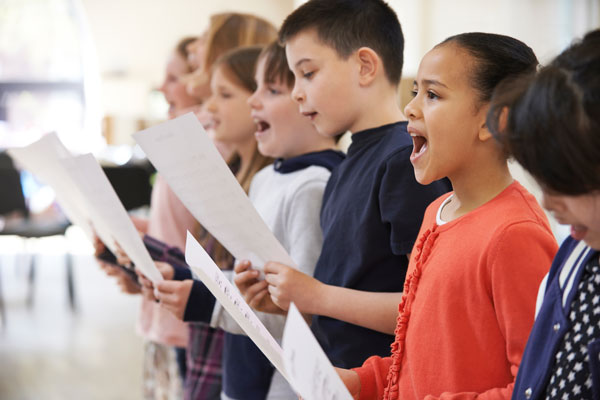 When they sing together in class, children learn about God in a deeper way. Singing adds to our praise and worship of God—that our voices are gifts, with which we can make music to the Lord. Sung prayer expresses the joy of the heart, the happiness resulting from one who has encountered Jesus Christ and experienced his love. Sung prayer reminds us of the choirs of heaven, with whom we are called to praise God eternally in heaven.
When they sing together in class, children learn about God in a deeper way. Singing adds to our praise and worship of God—that our voices are gifts, with which we can make music to the Lord. Sung prayer expresses the joy of the heart, the happiness resulting from one who has encountered Jesus Christ and experienced his love. Sung prayer reminds us of the choirs of heaven, with whom we are called to praise God eternally in heaven.
Singing together in the classroom prepares children to participate more fruitfully at Mass, too. Sung prayer reaches its high point in the sacred liturgy, the public worship of the Church. The Second Vatican Council taught that “liturgical worship is given a more noble form when the divine offices are celebrated solemnly in song, with the assistance of sacred ministers and the active participation of the people.” When the sacred liturgy is sung, it becomes more beautiful, and more reflective of the beauty of the Most Blessed Trinity.
Christians have sung in sacred liturgy since the Church’s earliest days. And the Jewish people have sung praise to God, in the context of holy worship, for thousands of years. The Psalms are the record of the liturgical song-prayers of the Jewish people. When we sing in the context of Holy Mass, we join a tradition of sacred worship that goes back to at least the time of King David himself. “Let us come before him with a song of praise,” wrote King David, “joyfully sing out our psalms.”
In addition, music can improve learning and increase a positive classroom atmosphere. Researchers are beginning to discover that singing is like an infusion of the perfect tranquilizer, the kind that both soothes your nerves and elevates your spirits. Music exerts a powerful influence on human beings. It can boost memory, build energy for learning, lighten your mood, reduce anxiety, and calm emotions.
Sing to the Lord a New Song. Sing or play a recording of a song that is suggested as a resource for the chapter you are teaching. See the chapter’s Resources pages in the Be My Disciples and Blest Are We Faith in Action Teacher Editions.
Online Music Programs. Students can become more engaged in learning when you add music specifically related to the lesson. Both the Be My Disciples and the Blest Are We Faith in Action series offer an Online Music Program to supplement all grade levels. The six-year license allows you to include songs to enhance each chapter, unit, and liturgical year celebration, adding fun for your children as they learn about their faith.

Dr. Lauri Przybysz specializes in equipping families to live their vocation to be domestic churches and signs of God’s love. Lauri received the Doctor of Ministry from the Catholic University of America, and she has been both a Catholic middle school religion teacher and a faith formation coordinator at the archdiocesan and parish levels. She is the mother of six children and grandmother of 21.
Product Highlight
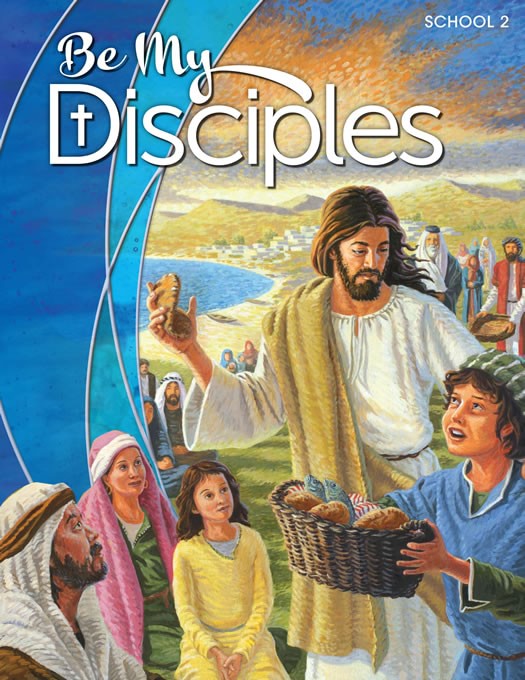 Be My Disciples for Schools
Be My Disciples for Schools
Build a world filled with Christ’s disciples with the Be My Disciples religious education program, designed to empower students and their families to grow in their relationships with Jesus Christ and to develop the habits of lifelong discipleship. Students will learn to take their place in the midst of the Catholic community and to grow in their identity as daughters and sons of God through each lesson.
Be My Disciples offers:
- A comprehensive and complete program for Catholic school religious education
- Innovative features to develop religious literacy and invite the integration of faith and life
- Online resources for children, parents, catechists, and program directors
- Engaging lesson plans, as well as an easy-to-use lesson planner for each chapter
The last time I remember feeling a deep sense of belonging was during a retreat for Catholic school educators. My role was as diocesan staff, and while I had facilitated a number of retreats over the years, and was sometimes sought out for spiritual talks, this time, I was grateful to simply be in attendance, to listen and learn. Surprisingly, the real inspiration that day came from seagulls.
 Behind the retreat center, an enormous jetty of black rocks jutted out into the water, calling me to sit and just be for a while during the break. To get there, I had to cross a stretch of beach where a hundred or more seagulls were resting. There was barely room to put my foot down without stepping on one.
Behind the retreat center, an enormous jetty of black rocks jutted out into the water, calling me to sit and just be for a while during the break. To get there, I had to cross a stretch of beach where a hundred or more seagulls were resting. There was barely room to put my foot down without stepping on one.
I don’t remember how long it took to cross the beach, it was slow going, but during that time, not one seagull moved or flew away at what I believed to be my intrusion. It was an incredible experience of peace of mind and heart because I didn’t feel like an interloper or an outsider in the natural world. The gulls accepted me. I belonged.
Essentially, we all belong to God, our creator, but often times we need the reminder – as do our children. As one child care center proposes, “Every child deserves to have someone's eyes light up when they enter the room.”
Hopefully, children develop that profound sense of belonging within their families, but it needs to be supported and experienced within their school communities, as well. A wonderful “belonging” story to share in the religion classroom is the story of Zacchaeus, a tax collector, a sinner who was most likely not on the invite list for many gatherings or celebrations; a short little man who climbed a sycamore tree to catch sight of Jesus (Luke 19:1-10).
But Jesus knew Zacchaeus deep down and did what no one else would do. Jesus invited him to share a meal. He also invited himself to Zacchaeus’ house, making him a “guest of a man who is a sinner,” which shocked the locals.
Jesus let Zacchaeus know that he was loved, that he had value, and that he belonged, and the encounter transformed Zacchaeus, who “received (Jesus) with joy,” and ultimately became the person God had intended him to be. That is the fruit of belonging.
With today’s prevalence of social media, once children begin to connect and spend extraordinary amounts of time on tablets, video games, or phones, they often end up looking for belonging in all the wrong places.
On the road to helping our children develop a healthy sense of belonging in all the right places:
Share more Scripture stories – Jesus was known for bringing everyone into the fold, treating them with respect, and honoring their inherent dignity. Good Scripture stories, presented age-appropriately, include the Samaritan woman at the well (John 4:1-42), the pardon of the sinful woman (Luke 7:36-50); Nicodemus the Pharisee (John 3:1-8); the parable of the lost sheep (Luke 15:1-32).
Highlight unique abilities and strengths – Provide students with opportunities to demonstrate some area of strength or talent and encourage students to applaud and value the gifts of their classmates. Perhaps more important is recognizing what a student is really interested in, which may not be the same as a strength or ability. Interest is often a greater motivator than skill.
Follow Jesus’ example – Jesus the Master Teacher was an inviter and a listener, two practices that will help nurture students’ sense of belonging, and help them to become inviters and listeners themselves. Students might be encouraged to extend or accept an invitation to eat lunch or share recess time with another student or listen quietly and attentively while another student is speaking in class. Listening to others ensures we come to know them better and have some understanding of their wants and needs – a crucial social skill for children, who will become adults, and who have to share the playground.
See your classroom as a small faith community – Belonging to a faith community is a powerful way to grow in faith, feel welcomed and secure, and share a mission with other members. Students have that experience in their Catholic schools, and particularly, in their religion classrooms. Here they learn the faith, have opportunities for prayer and reflection, and give life to their faith through action. They may also worship together and celebrate sacraments together. A faith community is a powerful tool for belonging and an antidote to the challenges of today’s culture.
 About the Author
About the AuthorMary Clifford Morrell, mother of six and grandmother to ten, is a Catholic journalist, editor, and author who has served the Dioceses of Metuchen and Trenton, New Jersey; Burlington, Vermont, and RENEW International in the areas of religious education and communication.
Product Highlight
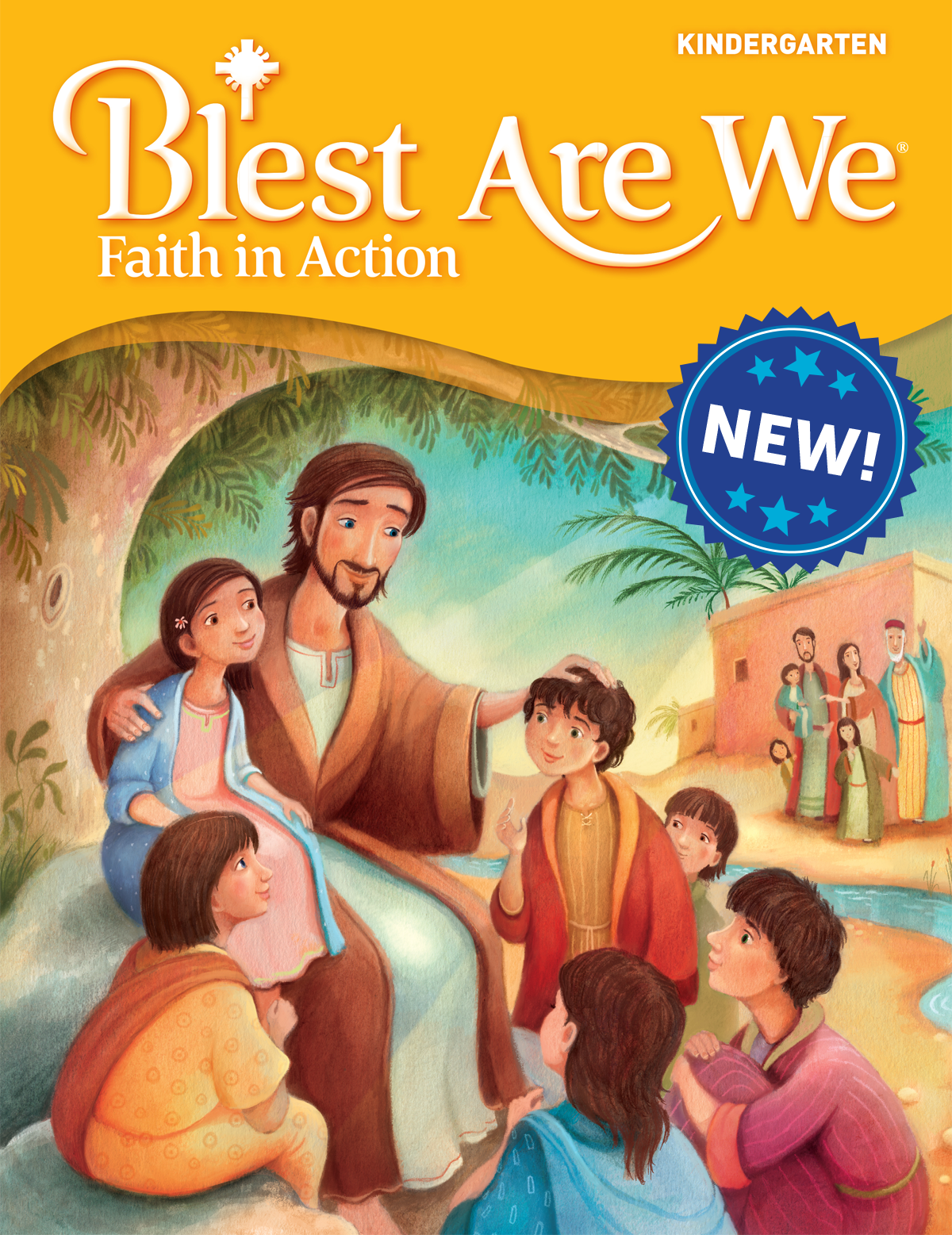 Blest Are We Faith in Action for School
Blest Are We Faith in Action for School
Blest Are We Faith in Action offers:
- Faith in Action pages for each chapter, establishing a strong connection to Catholic Social Teaching
- Redesigned Take Home pages, supporting families in the faith formation of their children
- Increased focus on children with special learning needs, addressing practical ways to adapt lessons
- Training Videos for Teachers, eBooks, eAssessments, Family Resources, Catholic Resources, Saints Resources, Lectionary Resources, and more!
New for the Blest Are We Faith in Action Series – Scripture Videos for Grades 1-8!
Enjoy a selection of 40 Biblical scripture story videos that accompany the student lesson pages in our Blest Are We Faith in Action series. These Catholic Bible stories, saint stories, and parables of Jesus enhance the Catholic Faith lessons in your classroom. There are five unique scripture videos for students in grades 1-8.
In your classroom, you see children from a rich diversity of cultures. Your students may speak several languages, and they may even belong to different faith traditions. Culture is the way one sees and understands the world. Culture is like an invisible set of glasses that I put on that helps me to see and interpret the world. For us, culture is the water in which we swim, which means that we are often unaware of how we are shaped by our culture.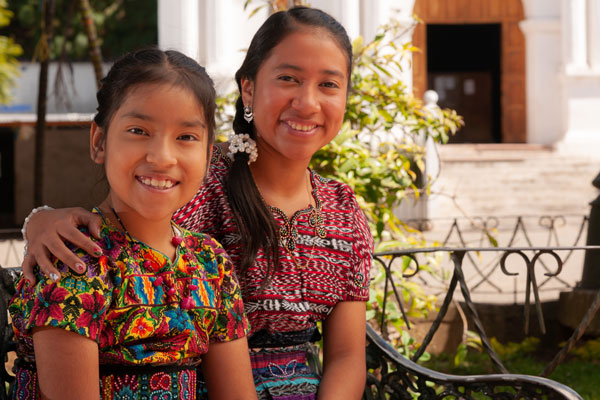
At Mass, we pray, “You never cease to gather a people to yourself, so that from the rising of the sun to its setting, a pure sacrifice may be offered to your name.” Our Catholic Church is present all over the world, and Catholic people bring the beauty of their traditional art, food, music, and languages to their lives. In each expression of the Catholic faith, we find the unity of love for Christ, the Blessed Mother, and the Saints. If we wish to work across cultures as one Church, we must become aware of our own culture and the cultures that shaped us.
Out of my family's cultural experiences, I have woven a tapestry of faith and life. I’m an American, but I usually say that my ancestors were Scottish and Italian. My Catholic faith comes to me through my Italian heritage, but I credit my Protestant Scottish mother for instilling in me a love of the Bible. I can make both scones and cannoli, and I know how to dance the Highland fling and Tarantella. My Christmas tree has plaid ribbons and dainty angels. I am enriched by both cultures.
Celebrating Our Roots. Help your students to appreciate the strengths of the cultural traditions of their own families. Ask them to share one food, piece of art, song, or holiday custom that their family practices because they learned it from their elders.
Learn How Other Catholics Celebrate. Invite young people to explore how the Catholic faith is celebrated in cultures that are not their own. For information about the role of Catholicism in dozens of other countries, check out the colorful book from RCL Benziger Our Family Devotions.
This book celebrates the many ways people of different cultures express the Catholic faith in their churches, neighborhoods, and homes. As the Good News of Jesus spread around the world, people in every culture found special ways to express their faith in God.
Learn More About Saints’ Cultures. A different saint is featured in every chapter of your Blest Are We Faith in Action series. Many saints were missionaries who brought their own cultures to new lands, and they were also enriched by the customs of the people with whom they ministered. For example, go deeper into the cultural backgrounds of Fr. Damien of Molokai (born in Belgium) or Blessed Miquel Pro of Mexico using the Catholics and Cultures website and the free RCL Benziger Saints Resource website.
 About the Author Dr. Lauri Przybysz specializes in equipping families to live their vocation to be domestic churches and signs of God’s love. Lauri received the Doctor of Ministry from the Catholic University of America, and she has been both a Catholic middle school religion teacher and a faith formation coordinator at the archdiocesan and parish levels. She is the mother of six children and grandmother of 21.
About the Author Dr. Lauri Przybysz specializes in equipping families to live their vocation to be domestic churches and signs of God’s love. Lauri received the Doctor of Ministry from the Catholic University of America, and she has been both a Catholic middle school religion teacher and a faith formation coordinator at the archdiocesan and parish levels. She is the mother of six children and grandmother of 21.
Product Highlight
Our Family Devotions
It is our prayer that through this book, your family will experience God in new ways in their everyday lives. May the diverse and rich traditions of families and the Church from around the world lead you to find new ways of living out your faith. May the beauty of these devotions remind us that we are one family in Jesus Christ, sharing God’s love in our homes, churches, and communities.
A prayer of blessing is one that calls on God’s power to care for a person, place, thing, or undertaking. In praying a prayer of blessing, we ask for God’s presence, goodness, and protection in the lives of those for whom the prayer is intended. When we pray, “Blessed be God forever,” we declare that God is the source of all blessings. Every blessing acknowledges and praises God's presence and prays for God's gifts for self and others. The start of the school year is a perfect opportunity to teach about and experience prayers of blessing.
Examples of Blessing. Discuss with students about times that they bless themselves e.g. making the sign of the Cross, using holy water, tracing the cross on their foreheads, lips and hearts before listening to the gospel.
Explore blessings from Scripture. Leaders often bless people, especially when getting ready to leave them, e.g., Moses (Deut. 33) and Jesus (Luke:24:50). The First Letter from Peter (1:3-9) has several elements of a blessing prayer beginning with giving thanks and praise to God.
Compose a Blessing Prayer. Invite students to write their own blessing prayers for someone or something, using these elements.
- YOU - begin by addressing God or naming God. For example, “God of new beginnings.”
- WHO - name ‘WHO’ God is for us. For example, “You are our strength and hope.”
- DO - we ask God to bless, to ‘DO’ something, as in “Be with us and bless our studies.”
- THROUGH - We pray to God in and THROUGH Christ, so our prayer concludes with a simple, “Through Christ our Lord. Amen.”
Bless Your Classroom. Begin with the Sign of the Cross. Lord God, we welcome you to this place and ask you to fill it with your glory. You are our Good Shepherd. We ask your blessings on our studies. We pray through Jesus Christ, our Lord.
Response: Amen.
Students’ tables or desks: Lord Jesus, bless all who work here. Open their minds and hearts to receive the Gospel, and fill their hearts with your Holy Spirit.
Response: Blessed be God forever.
Teacher’s desk: Divine Teacher, bless our teacher with wisdom and patience. We thank you for her/his knowledge and care for us.
Response: Blessed be God forever.
Classroom prayer table: Heavenly Father, we dedicate our prayer table to you. Inspire us to pray always.
Response: Blessed be God forever.
Books and computers: Loving God, bless all of our books and study materials. May they be a source of light for our minds and hearts.
Response: Blessed be God forever.
Back to School Blessing Resources. Look for more prayers and guidance at https://store.rclbenziger.com/content/back-school.
Explore More Prayer Forms. Your Blest Are We Faith in Action Teacher Edition includes a section dedicated to Catholic prayer practices, following the Table of Contents.
 About the Author
About the AuthorDr. Lauri Przybysz specializes in equipping families to live their vocation to be domestic churches and signs of God’s love. Lauri received the Doctor of Ministry from the Catholic University of America, and she has been both a Catholic middle school religion teacher and a faith formation coordinator at the archdiocesan and parish levels. She is the mother of six children and grandmother of 21.
Product Highlight
Catholic Prayers and Practices
This small book, Catholic Prayers and Practices including The Order of Mass, contains traditional practices and prayers that unite us as Catholics. It is designed to support you in your faith life, and it can assist you in helping the younger members of our Church learn, grow and live as active members of the Catholic community.
This resource can be used for private, family, or communal prayer. The Order of Mass section incorporates the language of the revised Roman Missal. Share the faith by giving copies of this book to others. In this way, you are sharing in the ministry of our Lord, Jesus Christ, who called us to be his disciples and to share the Good News with all people.
Hanging on the wall of my local Christian book and gift store is a poster entitled, “And He Shall Be Called.” It’s a simple poster comprised solely of the various names or titles referring to Christ found in the Bible. Below each name, in very small print, is the scripture reference that includes the name.
 Given its simplicity and lack of artistic images, its notable that in the 20 years since it was first printed, it has sold nearly 1.5 million copies. That speaks, I think, to the power of names.
Given its simplicity and lack of artistic images, its notable that in the 20 years since it was first printed, it has sold nearly 1.5 million copies. That speaks, I think, to the power of names.
Scripture reminds us, “The name of the Lord is a strong tower; the just run to it and are safe.”
In ancient times, names tended to have more meaning when it came to the character of the person named, which is why God or Jesus Christ often changed the name of someone chosen to be something more, someone for whom there would be a new path in life. Perhaps the most memorable is the disciple Simon whose name meant “one who hears or listens.”
When Simon was brought to Jesus, the Lord told him, “You are Simon the son of John. You shall be called Cephas” (Peter). Simon had no idea why his name would be changed, but Jesus knew that Peter, whose new name meant “rock,” was the one upon whom Jesus would build his church. Simon most likely had no idea he had that kind of leadership or strength in him.
The same is true for our children, especially as they become teenagers and are carrying heavy baggage we may not know about or understand. They may not be aware of the many gifts, God-given gifts, or talents they have. By valuing and respecting their names, we start our relationship with them by giving them the opportunity to value and respect who they are, with all their potential and not just all their mistakes.
What are the fruits of learning and remembering student names?
Building community – Learning student names is the first step in the process of getting to know them and ensuring that they feel like they are an important part of a community. Using student names, and saying them correctly, builds connection and a sense for students that they are being seen and heard. Experts in the field also observed that using a child’s name when speaking to them helps encourage positive behavior.
Seeing Every Child – Many years ago, at the request of a Catholic school teacher, I wrote a story that included every student in her elementary classroom by name. I designed the story into a small booklet and printed enough so every student in the classroom would have one. The class had students of many different nationalities, so many of their names were unique and, for some, challenging to read and pronounce. This short story made sure that each of them felt a part of the classroom community. How might you make sure every name counts?
Nurturing respect – Respect is an important Christian value, not only the respect of others but, as importantly, self-respect. A child’s name is crucial to their identity as a person and member of a family. By remembering their names and using them as often as possible, especially if we can look at them eye-to-eye at their level, we reinforce to students that they are worthy of our love and respect.
Growing student rapport – For each student, learning other students' names is important to building respect, rapport, trust, and accountability between students. Part of the process is learning how to say names correctly. It becomes easier the more often names are said aloud in class. All teachers have their own ways of memorizing student names, which might include desk name tags. These are not only valuable for teachers, but for younger students, it helps them develop a sense that their desk is their own personal space.
 About the Author
About the AuthorMary Clifford Morrell, mother of six and grandmother to ten, is a Catholic journalist, editor, and author who has served the Dioceses of Metuchen and Trenton, New Jersey; Burlington, Vermont, and RENEW International in the areas of religious education and communication.
Product Highlight
Stories of God's Love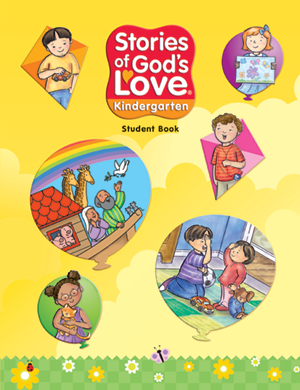
This program for preschool (ages 3-4 or 4-5) and kindergarten is an easy-to-use, developmentally appropriate early childhood curriculum designed to engage children and their families in learning about their Catholic faith and in making the connections between Scripture and daily life. Designed as the foundational cornerstone for each of RCL Benziger’s basal programs; Stories of God’s Love is aligned, connected, and integrated in a way that provides for the optimum sequential growth in a child’s faith formation. In addition, the program provides the flexibility needed to customize your school faith formation program.
Connecting with children’s social and emotional needs, the hands-on activities embedded within the curriculum are age and developmentally appropriate. Paired with the colorful illustrations, they engage the child and their family in creating a learning environment that mirrors God’s love for his children.
This morning I read a thought-provoking blog from a well-known deacon in the Church who wrote about the challenges of Church and culture and the interwoven nature of the two. He stressed that one of the reasons he was writing on this topic was because “the younger generation is watching.”
That’s a scary prospect, when we consider what children are exposed to today and what becomes assimilated as acceptable behavior, and while we may understand it as behavior unworthy of our Catholic faith, our children are still in the process of “becoming,” and need effort invested on all sides in their moral and faith formation.
That’s why the teaching of Catholic virtues is important in the religious education classroom. Virtues are described in the Catechism of the Catholic Church as “a habitual and firm disposition to do good. It allows the person not only to perform good acts but to give the best of himself” (CCC, no. 1803).
Catholic teaching identifies seven virtues, including three theological virtues which serve as the foundation for four Cardinal virtues. The three theological virtues are faith, hope, and love (charity), and “the greatest of these is love.” They relate directly to God and are gifts of God we receive in Baptism. The four Cardinal virtues, which are considered human virtues, are prudence, justice, fortitude, and temperance.
The language used in Catholic teaching to explain the virtues and their relationship to each other is sometimes daunting, such as in the Catechism of the Catholic Church, or writings of the Holy Fathers, but is worth tackling to help us, as religious educators, develop a fuller understanding of the simpler explanations in student texts. A greater understanding can only help us to be more effective in teaching students about the importance of virtues.
I have found the United States Catholic Catechism for Adults to be very helpful. It is an adaption of the Catechism of the Catholic Church developed by the United States Conference of Catholic Bishops. It relates Church teaching, as far as possible, to United States culture, affirming the positive elements and challenging the negative. Each chapter begins with a story of an American saint or other outstanding Catholic who belongs to a community of witnesses to the Catholic way of life, and also includes questions for discussion, meditation, and prayer.
The USCCA points out, “From the earliest days of the Church when St. Athanasius wrote the life of St. Anthony of the Desert, it was clear that telling stories about saints and holy people encourages others to be like them and is an effective way of teaching Catholic doctrine.”
That’s something easily done in a religion classroom and fits right in with one of the principal marketing practices for video games – community building. Let’s face it, given youth’s fascination with video games and anything screen-related, we are up against a formidable source of influence. We could take some lessons from their best practices for getting kids hooked.
In addition to the lessons in teacher guides, how may we cultivate Catholic virtues in the classroom?
Build Community – If sharing the lives of holy women and men with students provides them with models to emulate, evaluate how often you can manage it in the classroom. Additionally, these stories offer a consistent reminder that they, even as youth, are part of the communion of saints, comprised of all the members of the Church through all time including those now in the Church or those who have died and are either in Heaven or Purgatory. Remind students, visually as well as with words, that they belong to the family of God.
Create Saint Teams – As time and lesson plans allow, group students into teams under the name of a saint, maybe saints of a particular month or season. If old enough, have students work together to learn about their saint, discover the saint’s virtues and create a presentation on those virtues to share with the class. For younger students, use reading groups to read the story of a saint to the group and allow them to draw pictures about what they’ve heard and then talk as a group of the saint’s virtues.
Visual Displays – Tapping into the reality that children are inundated with and attuned to visual communication, consider using the language and definition of virtues as they are presented in the student texts to create single-word posters to keep on display in the classroom, or have students create symbols to represent each of the virtues, keep them on display, or turn them into class books.
Pray for Virtues – Add to your classroom prayers an opportunity for students to ask God for an increase in the seven Catholic virtues, or additional human virtues such as patience, humility, mercy, and kindness. Asking God for help is an excellent practice to cultivate in students, helping to develop the virtue of humility and faith for their journey ahead.
 About the Author
About the AuthorMary Clifford Morrell, mother of six and grandmother to ten, is a Catholic journalist, editor, and author who has served the Dioceses of Metuchen and Trenton, New Jersey; Burlington, Vermont, and RENEW International in the areas of religious education and communication.
Product Highlight
Family Life Second Edition
This program is the newly updated edition of RCL Benziger’s leading K-8 supplemental program that addresses key concerns of today’s Catholic families. Family Life includes child safety education in every grade level, promotes virtuous living, and strengthens Catholic identity.
The Family Life program reinforces the Catholic virtues and values that your students attain with their education. Family Life is an essential component of your school-based religious education program and meets Social and Emotional Learning (SEL) standards and benchmarks.
In the Scriptures and in the Lives of the Saints, we find many engaging stories that tell how God makes his presence known to people through Nature. Even the animals give testimony to the presence of their Creator. The Catechism of the Catholic Church tells us, "Animals are God's creatures. He surrounds them with his providential care. By their mere existence, they bless him and give him glory. Thus, men owe them kindness” (CCC, 2416).
Tell these stories of two donkeys who showed people the presence of God. Ask children to share about animals that reminded them of God’s love.
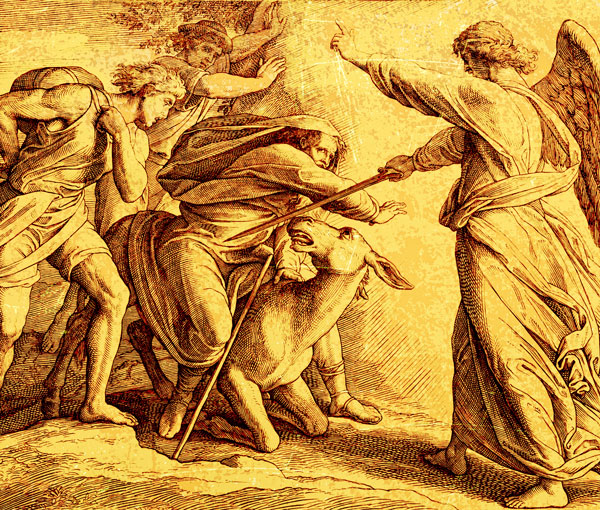 Balaam’s Donkey. In the Book of Numbers, Chapters 22-24, we meet Balaam, who served a pagan king who was an enemy of Israel. Balaam was highly regarded as a prophet who could bless or curse with his words. The king wanted Balaam to put a curse on the Israelites, and offered to reward him handsomely. God warned Balaam not to do it, but Balaam mounted his faithful donkey to go and announce the curse. On the way the donkey mysteriously stopped, knelt down and refused to move. Even though Balaam beat the poor beast mercilessly, it refused to continue. Scripture tells us the Lord opened the donkey’s mouth, and the donkey spoke, “What have I done to you to make you beat me like this?” Outraged Balaam cried, “You have made a fool of me! If only I had a sword in my hand, I would kill you right now!” Then God opened Balaam’s eyes, and he saw the Angel of the Lord in the road, sword drawn to strike him. Balaam recognized God’s presence and bowed down in the dust. He turned back and did not curse God’s people. Instead, he blessed them; and Israel prevailed against the enemy army.
Balaam’s Donkey. In the Book of Numbers, Chapters 22-24, we meet Balaam, who served a pagan king who was an enemy of Israel. Balaam was highly regarded as a prophet who could bless or curse with his words. The king wanted Balaam to put a curse on the Israelites, and offered to reward him handsomely. God warned Balaam not to do it, but Balaam mounted his faithful donkey to go and announce the curse. On the way the donkey mysteriously stopped, knelt down and refused to move. Even though Balaam beat the poor beast mercilessly, it refused to continue. Scripture tells us the Lord opened the donkey’s mouth, and the donkey spoke, “What have I done to you to make you beat me like this?” Outraged Balaam cried, “You have made a fool of me! If only I had a sword in my hand, I would kill you right now!” Then God opened Balaam’s eyes, and he saw the Angel of the Lord in the road, sword drawn to strike him. Balaam recognized God’s presence and bowed down in the dust. He turned back and did not curse God’s people. Instead, he blessed them; and Israel prevailed against the enemy army.
Saint Anthony and the Donkey. In the Middle Ages, much like in today’s society, some people denied the Real Presence of Christ in the Eucharist. Anthony engaged in several public debates with them but, although they could not out-argue him, they were not yet ready to give in. One day one of them demanded a miraculous proof, “If you can make my donkey bow down before what you call the Body of Christ, I will believe.” Anthony agreed, leaving the outcome to God. For three days the unbelieving man kept his donkey penned up without food. On the third day, a great crowd gathered in the city square. Anthony celebrated Mass in a little chapel and at the end he came out carrying the Blessed Sacrament. Meanwhile, the hungry donkey had also been brought along, and a basket of feed was placed in front of the starved animal. Anthony called out, “Donkey! Come here and show reverence to your Creator!” At once the animal came towards Anthony and bowed its head and knelt before the Sacrament. The owner of the donkey and many unbelievers were reconciled to the Church that day. More about Saint Anthony http://saintsresource.com/anthony-of-padua.
Each unit of Blest Are We Faith in Action offers a Saint of the Week and stories from Scripture that reveal God at work in our own lives. Use the new Scripture Videos in the Grade Level Organizers in your RCL Benziger Flourish account to enhance your storytelling.
 About the Author
About the AuthorDr. Lauri Przybysz specializes in equipping families to live their vocation to be domestic churches and signs of God’s love. Lauri received the Doctor of Ministry from the Catholic University of America, and she has been both a Catholic middle school religion teacher and a faith formation coordinator at the archdiocesan and parish levels. She is the mother of six children and grandmother of 21.
Product Highlight
Blest Are We Faith in Act ion for Schools
ion for Schools
Program offers:
- Faith in Action pages for each chapter, establishing a strong connection to Catholic Social Teaching
- Redesigned Take Home pages, supporting families in the faith formation of their children
- Increased focus on children with special learning needs, addressing practical ways to adapt lessons
- Training Videos for Teachers, eBooks, eAssessments, Family Resources, Catholic Resources, Saints Resources, Lectionary Resources, and more!
- New for the Blest Are We Faith in Action Series – Scripture Videos for Grades 1-8!
Enjoy a selection of 40 Biblical scripture story videos that accompany the student lesson pages in our Blest Are We Faith in Action series. These Catholic Bible stories, saint stories, and parables of Jesus, enhance the Catholic Faith lessons in your classroom. There are five unique scripture videos per grade level for students in grades 1-8.
Research shows that the biggest predictor of adult religious practice is a sense and practice of religion in childhood. How do children develop an early sense of religion? According to the research, the first factor was that parents spoke about God and faith at home, in daily conversation. Also important, and often more influential, are the Catholic school and parish faith formation community. Being part of a faith community, both at home and in the parish and school helps those important conversations happen.
 We hope for strong faith environments in homes, but we aim to reinforce and supplement the efforts of parents. The 2020 General Directory for Catechesis reminds us that teachers are evangelizers who put students in touch and in communion with Jesus Christ. Whether you teach in a Catholic school or a Parish Faith Formation Program, this guidance applies to you:
We hope for strong faith environments in homes, but we aim to reinforce and supplement the efforts of parents. The 2020 General Directory for Catechesis reminds us that teachers are evangelizers who put students in touch and in communion with Jesus Christ. Whether you teach in a Catholic school or a Parish Faith Formation Program, this guidance applies to you:
“As the vitality of the human body depends on the proper function of all of its organs, so also the maturation of the Christian life requires that it be cultivated in all its dimensions: knowledge of the faith, liturgical life, moral formation, prayer, belonging to community, missionary spirit. When catechesis omits one of these elements, the Christian faith does not attain full development.” (General Directory, 87)
RCL Benziger Blest Are We Faith in Action, Be My Disciples, and Family Life have been designed to provide teachers and parents with a rich assortment of activities and lessons to accomplish each of these six tasks.
- Knowledge of the Faith
- Liturgical Education
- Moral Formation
- Teaching to Pray
- Education for Community
- Missionary Initiation
The General Directory reminds us: “These tasks are interdependent and develop together. Each great catechetical theme—catechesis of God the Father, for example—has a cognitive dimension as well as moral implications. It is interiorized in prayer and appropriated in witness. One task echoes the other: knowledge of the faith prepares for mission; the sacramental life gives strength for moral transformation.” (General Directory, 87)
In our classrooms, we are called to “develop an atmosphere animated by a spirit of liberty and charity; to enable young people, while developing their own personality, to grow at the same time in that new life which has been given them in baptism; and to orientate the whole of human culture to the message of salvation’" (General Directory, 259)
Jesus is our model for evangelization. His willingness to accompany people motivates us to reach out with joyful hearts to students in the most challenged situations: “Moved by his example, we want to enter fully into the fabric of society, sharing the lives of all, listening to their concerns, helping them materially and spiritually in their needs, rejoicing with those who rejoice, weeping with those who weep; arm in arm with others, we are committed to building a new world” (Joy of the Gospel, 269).
References:
- Pope Francis, Apostolic Exhortation, The Joy of the Gospel (Evangelii Gaudium), Vatican, 2013. https://www.vatican.va/content/francesco/en/apost_exhortations/documents/papa-francesco_esortazione-ap_20131124_evangelii-gaudium.html
- General Directory for Catechesis, Congregation for the Clergy, Vatican, 2020. https://www.vatican.va/roman_curia/congregations/cclergy/documents/rc_con_ccatheduc_doc_17041998_directory-for-catechesis_en.html
 About the Author
About the AuthorDr. Lauri Przybysz specializes in equipping families to live their vocation to be domestic churches and signs of God’s love. Lauri received the Doctor of Ministry from the Catholic University of America, and she has been both a Catholic middle school religion teacher and a faith formation coordinator at the archdiocesan and parish levels. She is the mother of six children and grandmother of 21.
Product Highlight
Family Life Second Edition
Family Life Second Edition is the newly updated edition of RCL Benziger’s leading K-8 supplemental program that addresses key concerns of today’s Catholic families. In every grade level, Family Life includes child safety education, promotes virtuous living, and strengthens Catholic identity.
The Family Life program reinforces the Catholic virtues and values that your students attain with their education. Family Life is an essential component for your school-based religious education program, and meets Social and Emotional Learning (SEL) standards and benchmarks.
Pagination
Latest
Categories
Archives
- February 2015 (2)
- March 2015 (2)
- April 2015 (5)
- May 2015 (3)
- June 2015 (6)
- July 2015 (3)
- August 2015 (5)
- September 2015 (5)
- October 2015 (4)
- November 2015 (2)
- December 2015 (1)
- February 2016 (2)
- March 2016 (1)
- April 2016 (2)
- May 2016 (2)
- July 2016 (2)
- August 2016 (2)
- September 2016 (1)
- October 2016 (5)
- November 2016 (1)
- December 2016 (3)
- January 2017 (2)
- February 2017 (3)
- March 2017 (2)
- April 2017 (1)
- June 2017 (2)
- July 2017 (2)
- August 2017 (1)
- April 2018 (1)
- October 2018 (2)
- December 2018 (2)
- February 2019 (3)
- March 2019 (2)
- April 2019 (2)
- May 2019 (3)
- June 2019 (1)
- July 2019 (16)
- August 2019 (8)
- March 2020 (4)
- April 2020 (6)
- May 2020 (8)
- June 2020 (7)
- July 2020 (5)
- August 2020 (7)
- September 2020 (4)
- October 2020 (5)
- November 2020 (9)
- December 2020 (11)
- January 2021 (10)
- February 2021 (8)
- March 2021 (5)
- April 2021 (4)
- May 2021 (4)
- June 2021 (5)
- July 2021 (2)
- August 2021 (3)
- September 2021 (4)
- October 2021 (4)
- November 2021 (2)
- December 2021 (5)
- January 2022 (4)
- February 2022 (4)
- March 2022 (9)
- April 2022 (7)
- May 2022 (9)
- June 2022 (12)
- July 2022 (7)
- August 2022 (10)
- September 2022 (9)
- October 2022 (11)
- November 2022 (8)
- December 2022 (7)
- January 2023 (2)
- February 2023 (10)
- March 2023 (9)
- April 2023 (10)
- May 2023 (8)
- June 2023 (4)
- July 2023 (3)
- August 2023 (2)
